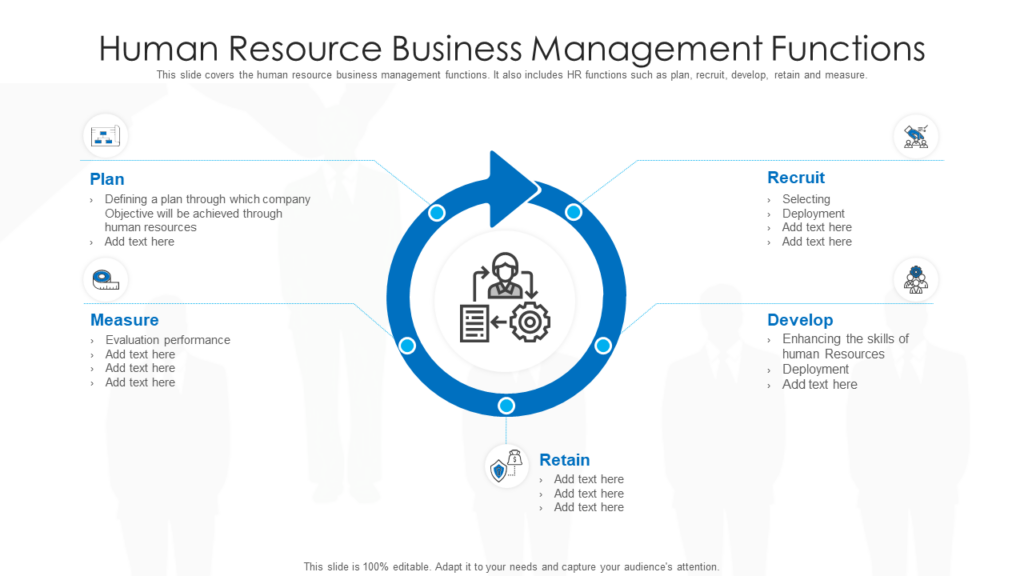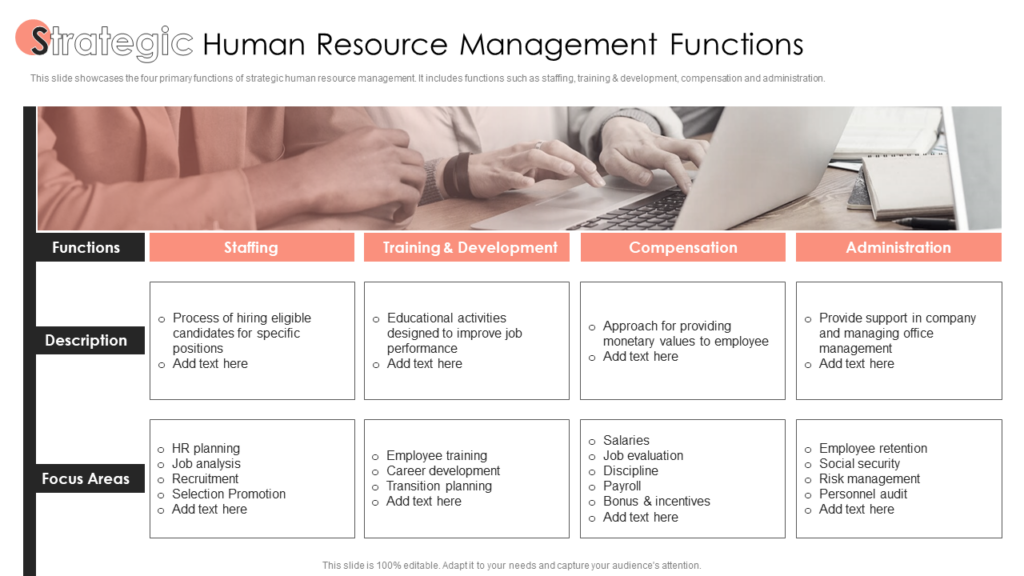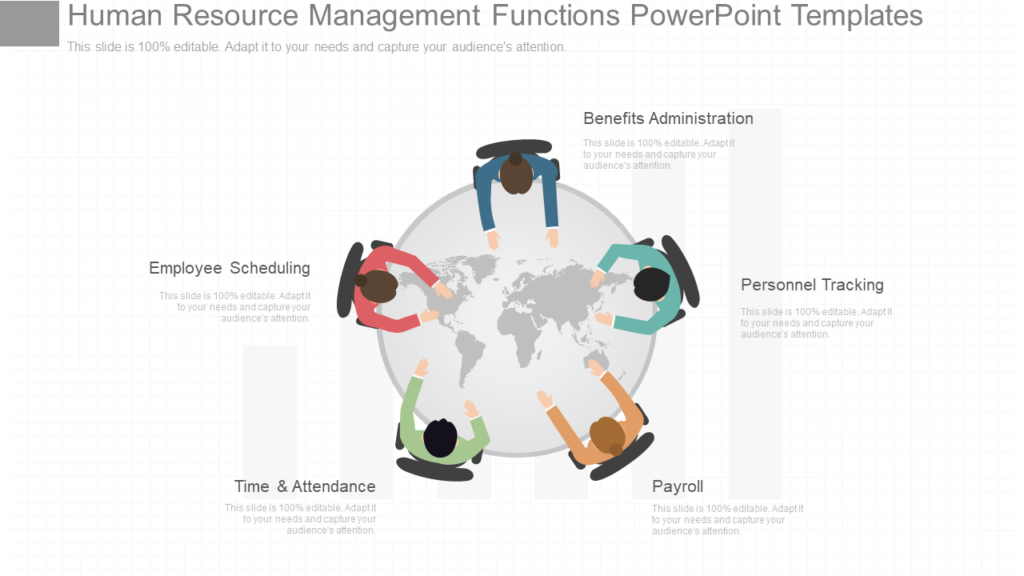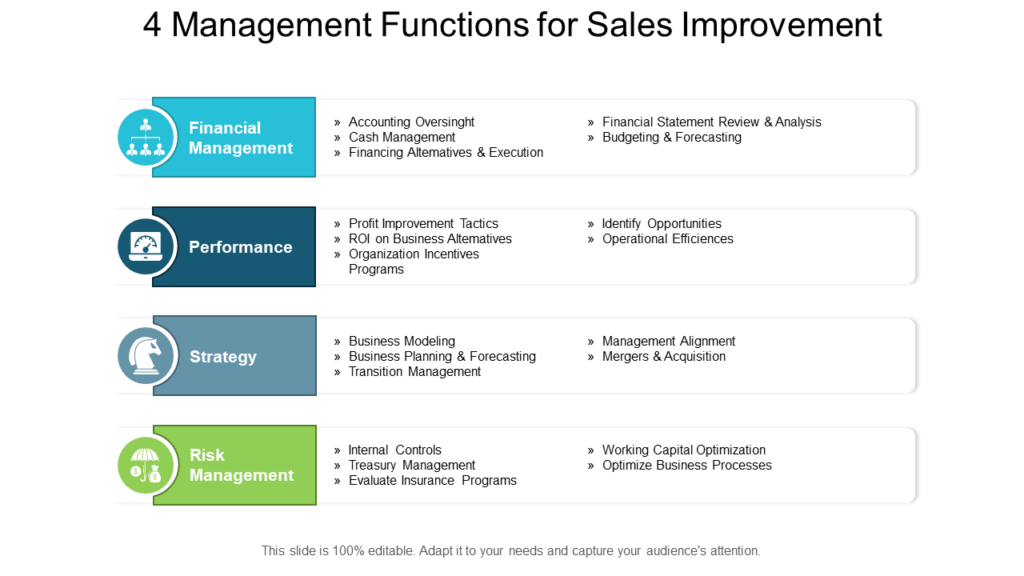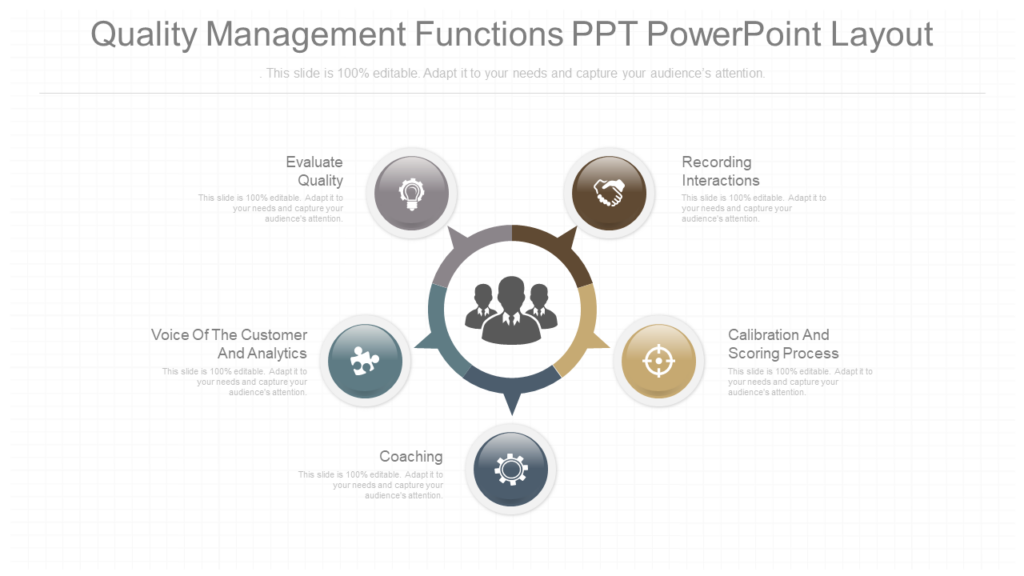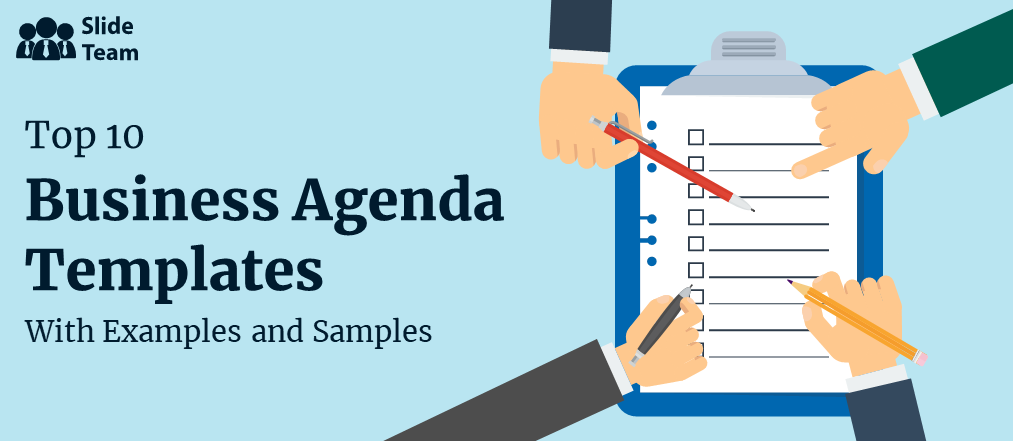If you want to manage your organization with ease and use resources effectively, take cue from the homemakers.
Have you ever wondered how moms supervise everybody at home and finish all her chores with clockwork efficiency and within time? No doubt, they are born with inherited management skills that make life so much better and easier for everyone at home.
Managers can also ease work processes and achieve their personal goals and business targets, all with ease, if they perfect their skills and outline management functions that help employees.
It is vital to demonstrate management functions to streamline business operations, use resources, and run organization without any hiccups. Management functions can vary across departments, such as, HR, Marketing, Quality, etc. You can also outline an actionable management function that suits all departments.
Management Function Templates to Organize Operations
Struggling to manage multiple processes at the same time? SlideTeam brings you content-ready and custom-made PPT Templates to help you plan, organize, lead, and control important and urgent operations. These PowerPoint Slides showcases varied strategies and ways you can use to improve processes, performances, and products. Deploy these pre-designed PPT Diagrams and take corrective action to ensure that businesses achieve their goals.
Browse the collection below and use these ready-made PowerPoint Templates to manage people, processes, and resources.
Let’s begin!
Template 1: Human Resource Business Management Functions Template
This is a ready-made PowerPoint Template to help you streamline your human resource management (HRM) functions. Incorporate this professional and appealing PPT Slide to monitor activities involved in managing an organization’s employees. This PPT Diagram showcases key HRM functions such as recruitment and selection, training and development, performance management, compensation and benefits, and employee relations for hiring and retaining the best talent. Grab this flexible PPT Template to outline a process that identifies and hires the right employees and helps your company achieve its goals. Download now!
Template 2: Strategic Human Resource Management Functions Template
Here is another top-notch PowerPoint Template for an HR manager to simplify processes and operations. It is a content-ready PowerPoint Slide showcasing functional areas of human resource management. You can use this PowerPoint Template to outline tasks involved in the vertical such as training and development, staffing, compensation, administration, and more. Use this ready-made PowerPoint Template to ensure that the right people are in the right positions, are equipped with the necessary skills and knowledge, and are motivated to perform at their best. Download now!
Template 3: Human Resource Management Functions PowerPoint Template
Looking for ways to enhance employee productivity and maintain a positive workplace culture? Deploy this ready-made PowerPoint Template and simplify your human resource management function to attract and retain talented employees. It is a pre-designed PowerPoint Slide exhibiting five domains in HRM that play a pivotal role in reducing employee turnover and ensuring that they have the necessary skills and knowledge to perform their job. Grab this ready to use PowerPoint Template to outline strategies and processes to promote employee engagement. Download now!
Template 4: Management Functions for Sales Improvement Template
Use this prebuilt sales improvement management function PowerPoint Template to streamline the process of planning, implementing, and monitoring an organization’s sales activities. Use this ready-to-use PowerPoint Template for setting sales goals, developing sales strategies, managing sales teams, and tracking sales performance. Grab this well-crafted PowerPoint Slide to ensure ensures that sales targets are met and revenue streams are sustained. Download this PPT Graphic now and adjust sales strategies based on market trends and customer feedback. Get it now!
Template 5: Quality Management Function PowerPoint Template
Want to meet or exceed customer expectations? Incorporate this ready to use PowerPoint Template to outline policies, procedures, and practices that help ensure that products or services are delivered, and always meet high standards. It is a content-ready PowerPoint Diagram showcasing five steps for improvement, implementing quality control processes, and measuring the success of those efforts. Deploy this pre-designed PowerPoint Template to help customers receive high-quality products and services that meet their needs and expectations. Use this professional and appealing quality management function to improve customer satisfaction, increase loyalty, and business performance. Download now!
CLEAR DIRECTION KEY
The management function plays a crucial role in the success of any organization. Management functions ensure that business use resources well, including financial, human, and technological. Having a well-planned management function in place leads to increased productivity, profitability, and competitiveness. Therefore, use SlideTeam’s content-ready and custom-made PPT Templates to provide clear direction and leadership to your organization, enabling employees to work towards a common goal. Download these templates from the above collection or click here.
FAQs on Management Functions
What are the four functions of management?
The four functions of management are planning, organizing, leading, and controlling.
Planning: This involves setting goals, objectives, and strategies. You also identify resources required and determining timelines for achieving goals.
Organizing: In it, businesses arrange resources such as people, materials, and equipment to carry out plans effectively. This includes assigning tasks and responsibilities, establishing communication channels, and creating a structure for the organization.
Leading: This involves directing and guiding employees towards achieving organizational goals. The focus is on providing motivation, coaching, and training to employees and creating a positive work environment.
Controlling: Involves monitoring and evaluating performance to ensure that plans are being executed effectively. This includes establishing performance standards, measuring progress, and adjusting plans as needed.
These four functions of management are interrelated and must be carried out in a coordinated manner.
What are the three skills of a manager?
The three key skills of a manager are technical skills, human skills, and conceptual skills.
Technical skills: These refer to the knowledge and proficiency in a specific field or industry. These are essential for managers to understand and oversee the work of their team members, identify technical problems and solutions, and make informed decisions related to technical aspects of the business.
Human skills: Point to the ability to interact and communicate effectively with people. These skills are essential for managers to build and maintain positive relationships with their team members, resolve conflicts, and motivate employees to achieve organizational goals.
Conceptual skills: Refer to the ability to think strategically and understand how different parts of the organization fit together. These skills are essential for managers to analyze complex situations, identify opportunities for improvement, and develop long-term plans to achieve organizational goals.
Effective managers require a combination of these three skills to manage their teams and achieve organizational goals. While the relative importance of each skill may vary depending on the specific role and industry, a balance of technical, human, and conceptual skills is essential for managerial success.
What are the 7 Ms of management?
The 7 Ms of management are a framework used to identify and analyze key elements of an organization. They are:
Manpower: Employees and human resources within the organization, including their skills, training, and experience.
Machinery: The physical resources and equipment used in the organization, including tools, technology, and production equipment.
Materials: Raw materials, supplies, and inventory used in the organization, including their quality and availability.
Money: Financial resources available to the organization, including budgets, cash flow, and financial performance.
Minutes: Time management and scheduling within the organization, including deadlines, timelines, and schedules.
Methods: These refer to the processes and procedures used within the organization, including production methods, quality control, and communication protocols.
Markets: External factors that affect the organization, including competition, trends, and customer demands.
The 7 Ms of management are a useful tool for analyzing an organization and identifying areas for improvement. By examining each of these elements, managers can identify strengths, weaknesses, opportunities, and threats within their organization, and develop strategies to improve organizational performance and achieve their goals.
What are management layers?
Management layers refer to the hierarchical levels of management within an organization. The number of management layers in an organization depends on the size and complexity of the business. Smaller organizations may have fewer management layers, while larger organizations may have several levels of management.
The typical management layers in an organization are:
Top-level management: This includes the highest-ranking executives in the organization, such as the CEO, COO, and CFO. Top-level management is responsible for setting strategic direction of the organization, making major decisions, and ensuring that the organization meets its goals.
Middle-level management: This includes managers who oversee specific departments or business units within the organization, such as department heads or regional managers. Middle-level management is responsible for implementing strategic plans of top-level management, managing day-to-day operations, and ensuring that their teams are achieving their goals.
Lower-level management: This includes supervisors or team leaders who oversee the work of front-line employees. Lower-level management is responsible for ensuring that work is completed on time and to a high standard, managing employee performance, and providing guidance and support to their teams.
The number of management layers in an organization can affect communication, decision-making, and overall efficiency. Excessive management layers result slow decision-making and a lack of agility, while too few layers lead to oversight and lack of accountability. Organizations need to strike a balance in the number of management layers and to ensure that their management structure is aligned with their strategic goals and objectives.


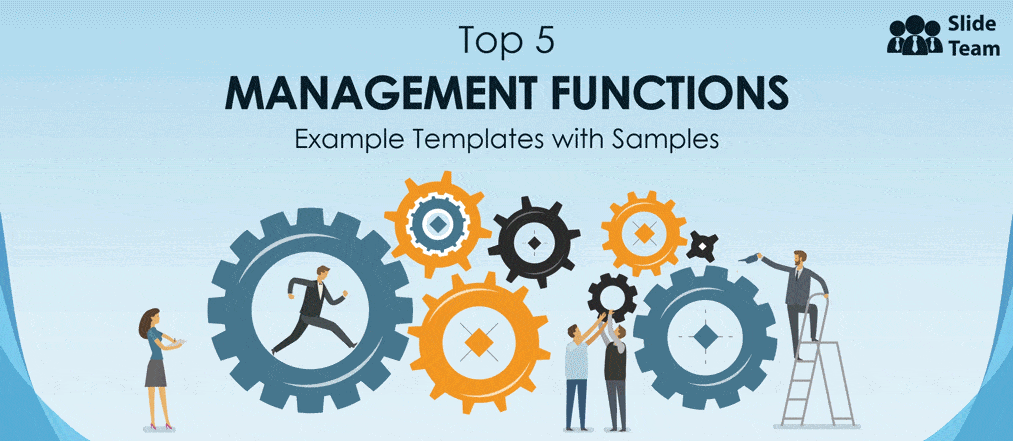


 Customer Reviews
Customer Reviews

